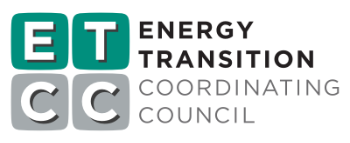Project Info
ACTIVE
Project Title
Automated Guideline 36 Validation
Project Number ET24SWE0019 Organization SWE (Statewide Electric ETP) End-use HVAC Sector Commercial Project Year(s) 2024 - 2026Description
This proposed CalNEXT project will develop a test method to validate that control programming is consistent with the control sequences in ASHRAE Guideline 36 (G36) High-Performance Sequences of Operation for HVAC Systems. The eventual goal is for the test method to evolve into an ASHRAE standard and become the basis of a Title 24 certification requirement. A working group has been established to begin collaborating on G36 testing procedures with several building automation systems (BAS) manufacturers directly involved.
Poorly implemented BAS is widely recognized as a major cause for HVAC systems that fail to meet their design intent, not maintaining thermal comfort and resulting in poor energy performance. Challenges stem from a variety of factors including lack of controls understanding by designers, poor workmanship by installers, and inadequate commissioning processes. G36 was developed to address these issues.
G36 provides high-performance sequences of operation, which are English-language descriptions for how HVAC systems are controlled by building automation systems. The use of G36 sequences provides significant energy efficiency and indoor environmental quality benefits compared to standard practice. Moreover, industry standardization around G36 provides the potential for substantial streamlining and improvement in implementation quality by allowing the G36 logic to be programmed and tested centrally by the major BAS manufacturers. Rather than the current approach of having individual installers interpret and program the control logic on a project-by-project basis, a process that is labor-intensive and vulnerable to quality control issues, installers could instead draw from pre-programmed logic from within a library of manufacturer programming.
BAS manufacturers have begun to program G36 centrally and some have released templates of G36 control logic in their unique programming languages for use by their installers, but these G36 programming libraries are not yet widely used. Objective testing is needed to spur the use of these pre-programmed libraries of control logic, to provide assurance that the libraries are robust and consistent with G36, and to realize the full potential of industry standardization around G36. The method of tests developed as part of this effort would help fulfill market demand for clarity on how to interpret G36 and an objective basis for confirming completeness and quality. In addition, the California Energy Commission is evaluating a draft change to the 2025 version of the California Building Energy Efficiency Standards (Title 24) to require the use of a certified G36 programming library. If adopted, this method of test could support future versions of the code to provide robust programming validation and become the future basis of the Title 24 certification requirement. The bulk of the work of this effort is to develop the detailed procedures for evaluating each sequence within G36, and to conduct outreach to ensure broad stakeholder support, particularly among BAS manufacturers.
Field demonstrations of G36 have shown significant energy savings over current practice and tools to enhance and streamline the use of G36 are needed to accelerate awareness and adoption of this emerging technology.
The primary deliverable of this project is a test standard for an automated approach to validate G36 programming. The test standard is intended to eventually be developed into an ASHRAE standard and become the basis for a newly proposed Title 24 requirement for the use of a certified G36 library in a future code cycle.
